News
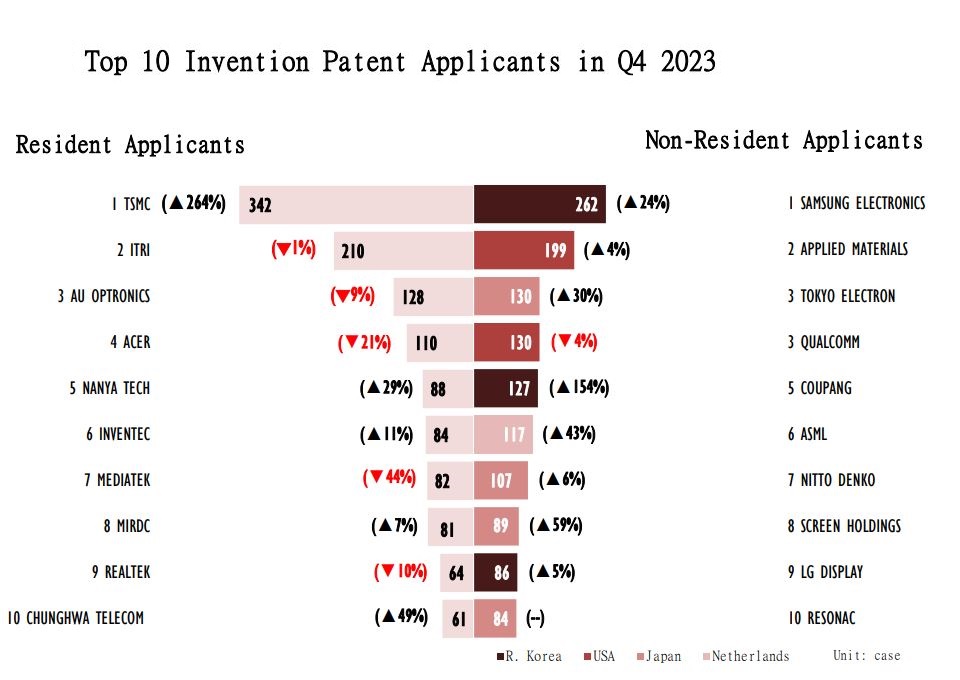 61
61TIPO’s Q4 2023 IPR Statistics Report
In Q4 2023, TIPO received a total of 19,686 patent applications, an increase of 3% compared to the same period last year. Among them, invention patents increased 4% to 13,928. Trademark applications grew 2% to 23,250. As for invention patents, TSMC filed 342 applications, ranking first among residents, while Samsung Electronics (262) led all non-resident applicants for the second year in a row. The top resident and non-resident trademark applicants were Uni-President (235) and International Foodstuffs (81) from the UAE. The number of trademark applications filed by the top 10 resident and non-resident applicants all saw positive growth.Patent ApplicationsIn Q4 2023, TIPO received an overall of 19,686 patent applications. Among them, invention patents (13,928) and design patents (1,921) increased by 4% and 3% respectively, while utility model patents (3,837) decreased by 2%. The number of invention patents filed by residents grew by 3%, and those filed by non-residents across all three patents witnessed growth ranging from 5% to 45% (Table 1).Among the top ten resident applicants of invention patents, TSMC showed significant growth (+264%) by leading with 342 applications, followed by ITRI (210) and AU Optronics (128). However, MediaTek (82) ranked seventh, experiencing a decrease (-44%) due to a higher base period in the same period last year (Figure 2).Among the top five resident applicants for design patents, Acer (22) maintained its top position for the fourth consecutive year, followed by Chang Gung University of Science and Technology (16). Hon Hai (12) entered the top five for the first time since 2020 (Figure 3).Resident applicants filed a total of 5,409 invention patent applications, with enterprises accounting for 4,083 applications (5% increase). However, both colleges and universities (489) and research institutions (384) saw negative growth. Further breakdown by size showed that applications from large enterprises (3,342) and SMEs (741) grew by 6% and 1% respectively.Non-resident applicants filed 8,519 invention patent applications, marking a 5% increase. Among the top five countries (regions), Japan topped with 3,188 applications. Considered alongside Mainland China (1,144) and R. Korea (964), all three showed growth ranging from 8% to 16% (Figure 1).Among the top ten non-resident applicants for invention patents, Samsung Electronics from R. Korea outnumbered all others with 262 applications for the second year in a row. ASML (117) from the Netherlands, Screen Holdings (89) from Japan, LG Display (86) from R. Korea, and Resonac (84) from Japan each set new records for their respective companies. Additionally, Coupang (127) from R. Korea surpassed all others with a remarkable growth of 154% ((Figure 2).Among the top five non-resident applicants for design patents, all exhibited positive growth in the number of applications. Apple from the US not only surpassed other applicants in the number of applications (122) but also achieved a sharp growth rate (+259%). It is particularly noteworthy that Apple’s number of applications has exceeded 100 for the first time since 2013. Moreover, BMW (42) from Germany saw a remarkable increase of 200% as well (Figure 3).Trademark Applications23,250 trademark registrations were filed in 2023 across 29,004 classes, marking a 2% increase. Growth was mainly driven by a 9% growth among non-resident applicants (5,249). On the other hand, those from residents (18,001) saw a slight decrease of 0.5% (Table 1).The number of trademark applications from the top ten residents all showed positive growth, with Uni-President leading with 235 applications. Companies such as CHE TAI (73) and SULINE (55) showed sharp growth due to their lower base periods (Table 2). A breakdown by NICE classification shows that the highest number of residents (3,531) filed under class 35 (advertising, business management, retail and wholesale services, etc.) (Figure 4).Non-resident trademark applications were predominantly from Mainland China (1,185)(Figure 1). The number of applications from the top ten non-residents all showed positive growth as well. Of these, International Foodstuffs from the UAE) topped with 81 applications (Table 3). A breakdown by NICE classsification shows that non-resident applicants filed the most applications (1,025) in Class 9 (Computer and technology products, etc.)(Figure 5).Among industries, most trademark applications were filed under “Agriculture” (6,251), followed by “Business Services” (4,722), and “Health” (4,601) (Figure 6).Resident applicants showed a preference for "Agriculture" (5,218), mainly due to the larger number of trademarks applications in the restaurant and accommodation sectors. On the other hand, non-resident applicants have the most applications in "Research and technology" (1,590). Moreover, trademark applications filed under "Agriculture" by residents, as well as “Health” and “Clothing and accessories” by non-residents, experienced a shift from negative to positive growth.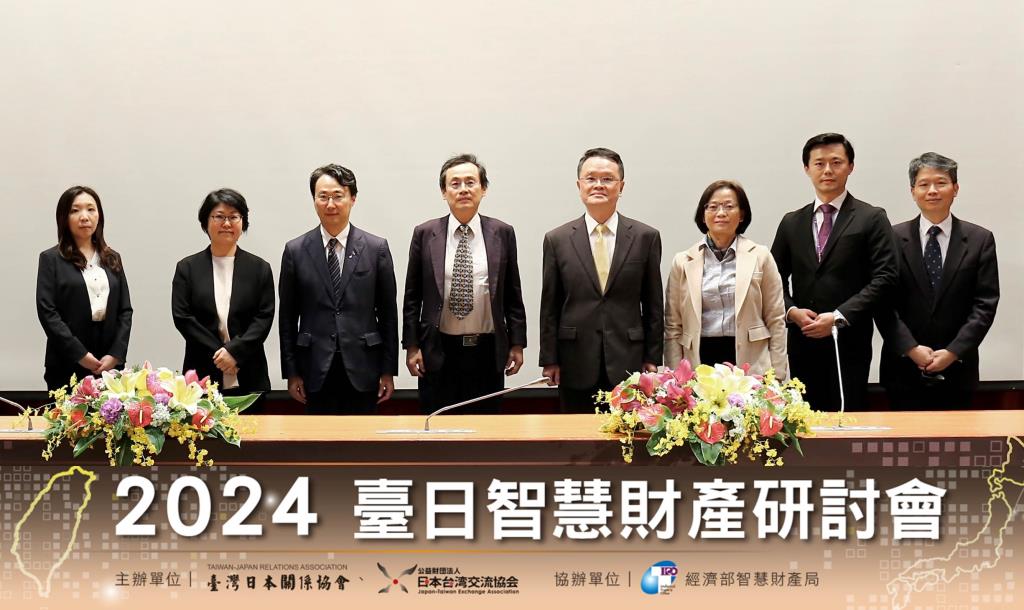 62
622024 Taiwan-Japan Intellectual Property Symposium Concludes to Widespread Participation and Support
The 2024 Taiwan-Japan Intellectual Property Symposium, a collaborative effort of the organizers Taiwan-Japan Relations Association and Japan-Taiwan Exchange Association, in partnership with Taiwan Intellectual Property Office (TIPO), opened on February 2, 2024 (Friday) at the NTU College of Law Tsai Lecture Hall. Remarks were delivered by distinguished guests including Taiwan-Japan Relations Association Deputy Secretary-General Ching-Hung Lin, Japan-Taiwan Exchange Association Deputy Representative Dr. Takashi Hattori, Taiwan Intellectual Property Office (TIPO) Director-General Dr. Cheng-Wei Liao. And also, Japan Patent Office (JPO) Director-General of Policy Planning and Coordination Department, Mr. Mikiharu Shimizu made some closing remarks which summarized the main points of the symposium.Speakers invited to the symposium included Director Masashi Omine from JPO Design Registration System Planning Office, Chief Judge Huei-Ju Tsai from the IP and Commercial Court, Senior Patent Examiner Ming-Feng Hsu from TIPO Patent Administration & Planning Division, and IP Lawyer Kaoru Kuroda from Abe, Ikubo & Katayama. Topics covered the protection of digital designs under the Japanese Design Act, the relationship between the metaverse and design patents, case studies of the utilization of design patent rights in Japan, and judicial practices of design patents in Taiwan.First, Director Masashi Omine gave an introduction to Japan’s Design Act, recent trends in design applications related to images, buildings, and interior decorations, as well as key revisions in the practical application and Examination Guidelines for Designs Including a Graphic Image. Senior Patent Examiner Ming-Feng Hsu then discussed international case studies related to the metaverse and practical protection of cross-disciplinary design applications, i.e. design patent infringement case against the Detroit Red Wings, and the invalidation of Candy Crush virtual candies in the EU.In addition, IP Lawyer Kaoru Kuroda from Japan shared examples of the utilization of design patent rights in Japan, highlighting the criteria for determining design patent infringement. Finally, Chief Judge Huei-Ju Tsai from the IP and Commercial Court used specific judicial cases in Taiwan to explain the process of design evaluation in the courts, including the overall observation, comparison of "common features" and "differential features," methods for ordinary consumers to determine whether they are similar, and key points to consider in visual effect judgments.The 2024 symposium garnered over 140 participants from the industry, government, and academia, who engaged in extensive exchange with experts from both Taiwan and Japan. By providing detailed information on regulations and relevant practices, TIPO hopes to facilitate better public understanding for the design patent regime and judicial practices of Taiwan and Japan. TIPO also hopes that it will serve as a reference for Taiwanese companies when applying for design patents and setting up patent portfolios in Japan. 63
63Interview Series on Outstanding Female Leaders in the Field of IP in Taiwan is Now Featured on the TIPO Website!
In the modern era of the knowledge economy, IP such as patents and copyrights, which highlight innovation and creativity, have become crucial assets for both individuals and businesses. The widespread gender disparity we see worldwide is especially stark in the field of IP. Regardless, both men and women contribute significantly to the field of IP.For insights into the career development of female IP professionals in Taiwan, TIPO produced a series of interviews entitled “Outstanding Female Leaders in the Field of IP in Taiwan.” The series is honored nine outstanding women, including Economic Minister Mei-Hua Wang, Chief Judge Huei-Ju (Grace) Tsai from the IP and Commercial Court, Professor Su-Hua Lee from the NTU College of LAW, Attorney Grace Shao from Baker & McKenzie, and Attorney Joyce I. Ho from Tsar & Tsai Law Firm.Three outstanding women from TIPO were also interviewed: Deputy Director General Yuh-Ying Chang, Chief of the Trademark Division Hu Ping-Lun, Deputy Chief of Patent Examination Division II Li Dong-Shiow, and Deputy Chief of Patent Dispute Examination Division Chao Ching-Ling.This series of interviews with outstanding female leaders in the field of IP demonstrates that as long as women are brave enough to rise to the challenge, they can excel even in fields traditionally dominated by men, such as science, engineering, and technical fields. Through interdisciplinary learning and practical experience in areas like technology, law, and management, women can leverage their unique attributes to forge successful careers and make a path for themselves.The Outstanding Female Leaders in the Field of IP in Taiwan interview series is now featured on TIPO’s official website (in the gender equality section). Through this series of interviews, we hope to inspire women to breakthrough gender barriers and chase their dreams, as well as to encourage more women to begin a career in IP.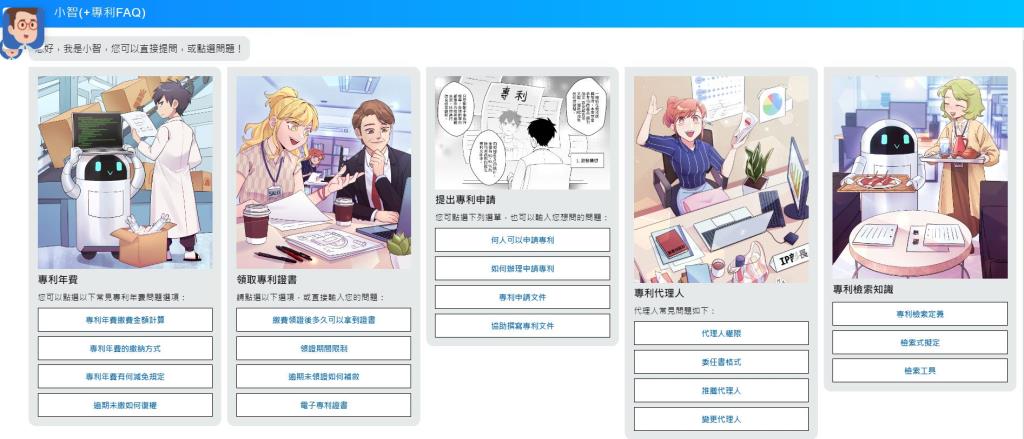 64
64TIPO’s AI Chatbot “Tipo” Goes Live on Dec. 5!
TIPO is proud to introduce “Tipo,” our new AI chatbot, which went live on December 5. Tipo provides 24/7, real-time patent consultation services to meet the needs of creators, who need quick and immediate answers.Since establishing the online service center in August 2011, TIPO has been offering consultations to the public for electronic applications, online payments, and patent application procedures. TIPO fields almost 40,000 calls annually, demonstrating its unwavering commitment and service.As such, TIPO has amassed years of customer service experience and an extensive FAQ database for patent inquiries. On the basis of this foundation, TIPO introduced the AI customer service chatbot Tipo to provide rapid responses to common patent questions, allowing applicants access to answers anywhere and anytime. 65
65TIPO Releases “Report on Key Technologies and Patent Analysis for Waste Management in the Global Semiconductor Industry” for Public Reference
ESG (Environmental, Social, and Governance) is currently one of the hottest topics in the semiconductor industry, closely related to the concept of the circular economy. In the traditional linear economy, resources are obtained, transformed into products, used, and eventually discarded as waste. Managing and recycling waste or reducing resource waste in the manufacturing process is crucial for the semiconductor industry's circular economy (or ESG). For instance, purifying waste resources into semiconductor-grade chemicals and reintegrating them into the manufacturing process to achieve sustainable goals through green practices.The report focuses on copper recovery, silicon slurry recovery, and hydrogen recovery within waste management in the semiconductor industry. Data is compiled and organized, and relevant patent trends are included within the report. Key technologies have also been selected for in-depth analysis. The aim is to provide insights and inspiration for the development of green circular economy practices in the domestic semiconductor industry.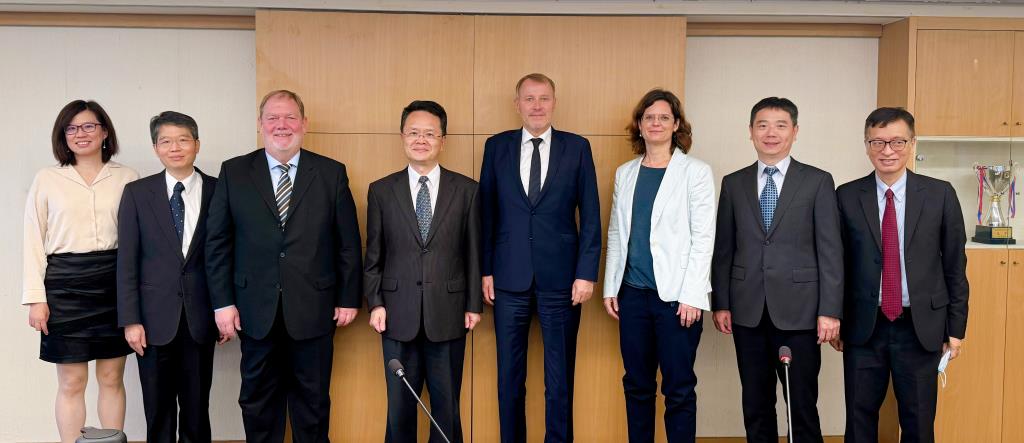 66
66TIPO Welcomes Experts from the German Patent Office (DPMA) to Taiwan
In November, TIPO welcomed experts from DPMA to visit Taiwan and conduct bilateral exchanges on intellectual property.Various topics were discussed, including the legislative framework and practices of the German utility model system. Unlike the German system, which originally aimed to protect creations with lower technical content and tangible shapes, the utility model patent system in Taiwan is widely used to protect inventors' patents.During the visit, three experts from DPMA, including Dr. Volker Rüger, Head of Central Unit - International Affairs, Mr. Jörg-Eckhard Dördelmann, Head of the Legal Division and Chief of the Utility Model Revocation Procedure Unit, and Ms. Antje Wielage, Head of the Utility Model Division and Chair of Cancelation Proceedings, delivered presentations on topics such as the German utility model system, practices, and case law, DPMA's measures in response to the EU’s Unitary Patent System that officially launched on June 1, 2023, and patent data retrieval.Experts from both sides discussed and exchanged views eagerly, contributing valuable insights for Taiwan's ongoing efforts to optimize its patent system.Furthermore, as part of efforts to deepen bilateral intellectual property exchanges between Taiwan and Germany, TIPO arranged a visit to Taiwan's ITRI Technology Transfer and Law Center. During the visit, DPMA experts were introduced to IP programs and services provided by ITRI to assist domestic SMEs, offering insights for the DPMA to strengthen IP support for German SMEs. 67
67US and Taiwan Signs MOU on the Secure Exchange of Patent Data
On November 22, 2023, Taiwan and the US signed the MOU on the Secure Exchange of Patent Data, streamlining and reducing the cost of patent priority claims for Taiwanese applicants who annually file over 20,000 patent applications in the United States.The annual number of patent applications filed by Taiwanese applicants in the United States has consistently been around 20,000 in recent years. The numbers rose a significant 6% from 2021 to 2022. The MOU aims to alleviate this burden by facilitating the secure exchange of priority documents between the Taiwan Intellectual Property Office and the United States Patent and Trademark Office (USPTO).The collaboration between Taiwan and the United States on the electronic exchange of priority documents began in 2016 through TIPO and USPTO’s bilateral discussions. Given the importance of information security, both confirmed details related to information equipment and transmission meticulously.After continuous efforts from both sides, the MOU was finally signed this year. This milestone in the deepening of our relations with the US follows the implementation of the Patent Prosecution Highway (PPH) project in 2011, and the signing of the MOU on Intellectual Property Rights Enforcement Cooperation in 2017.To create an environment conducive to international patent applicants, TIPO has launched electronic priority document exchange (PDX) program with Japan and South Korea in 2013 and 2016 respectively. Furthermore, the PDX programs were expanded to design patents with Japan and South Korea in 2019 and 2021 respectively. The recent expansion in PDX collaboration with the US shall greatly increase the convenience of Taiwanese applicants filing patent applications in the US, as well as for US applicants filing in Taiwan – a mutually beneficial arrangement.The MOU was signed by the Deputy Representative Johnson S. Chiang of Taipei Economic and Cultural Representative Office in the United States (TECRO) and AIT/W Managing Director Ingrid D. Larson.Following the signing, TIPO and USPTO will conduct verification tests on information systems. Upon the completion of information security equipment testing by both offices, the implementation start date will be publicly announced.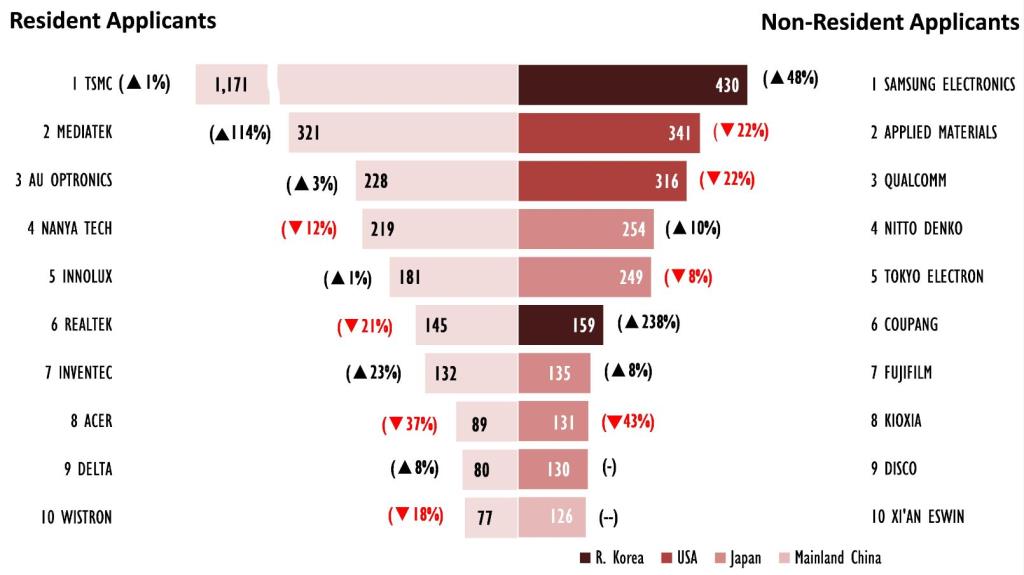 68
68TIPO’s Q3 2023 IPR Statistics Report
In Q3 2023, TIPO received a total of 18,310 patent applications (including invention, utility model, and design patents), marking a 1% increase over the same period last year. Of these, the number of invention patent applications (12,670) also grew by 1%. Trademark applications stood at 23,632 cases, with a drop of 7%. For invention patents, TSMC (443 applications) has topped the list for eight straight years among resident applicants, while Samsung Electronics (285 cases) leapt to the top of the list of all non-resident applicants. For trademarks, Taishin (264 applications) and Tencent (38 applications) ranked first among resident and non-resident applicants, respectively.Patent ApplicationsTIPO received 18,310 patent applications, most of which were invention patents (12,670) marking a slight increase of 1%, compared to the same period (Q3) last year. The number of applications for both utility model (3,782) and design (1,858) remained relatively unchanged. In addition, resident applications for invention patents went up by 1% and non-resident applications for overall patents grew by 1% to 14% (Table 1).Most of the top 10 resident applicants for invention patents saw double-digit growth. TSMC filed 443 applications, outnumbering other resident applicants for eight consecutive years. Delta (67 applications) saw the highest growth rate with 103%, and Nuvoton (62 applications) hit a new record high (Figure 2).In terms of resident applicants for design patents, CGUST (33 applications), the only university in the top 5 applicant list, claimed the top spot for the first time, setting its all-time-high record and seeing the highest growth rate with 313%. Delta (14 applications) rose rapidly by 100%, and Hi-Joint Tech (10 applications) entered the top 5 list, claiming fifth place (Figure 3).Residents filed 4,830 invention patent applications (Table 1). Of these, the number of applications filed by domestic enterprises (3,912) and state-owned enterprises (21) grew by 6% and 91% respectively, while that of colleges and universities (375) and research institutions (105) fell. Further breakdown by firm size shows that applications from large enterprises (3,242) went up by 7%, whereas those from SMEs (670) dipped.The number of invention patent applications filed by foreign applicants (7,840) increased by 1% (Table 1). Of these, Japan filed the most with 3,100 applications, and R. Korea saw the highest growth of 28% (Figure 1). Among the top 10 applicants, Samsung Electronics (KR) leapt the top spot with 285 applications. Others include Coupang (KR) (168 applications), Tokyo Electron (JP) (168 applications), Resonac (JP) (67 applications), and Shin-Etsu Chem (JP) (65 applications), all of which reached their respective all-time-high records. In addition, applications from Coupang soared by 291%, the highest growth rate among all non-resident applicants (Figure 2).As for non-resident applicants of design patent filings, the number of applications filed by all the top 5 applicants showed positive growth. Of these, BMW (DE) came out on top with 63 applications (Figure 3).Trademark ApplicationsCompared to the same period last year, trademark applications reached 23,632 (covering 29,478 classes), going down by 7%. The number of applications filed by residents (18,790) and non-residents (4,842) both declined (Table 1).Most of the top 10 resident applicants saw positive growth. Taishin filed 264 applications, outnumbering all other applicants (Table 2). A breakdown by Nice classification shows that most applications (3,772) were filed under Class 35, “Advertising, Business Management, Retail and Wholesale Services, etc.” (Figure 4).Mainland China filed the most non-resident applications (1,246)(Figure 1). Most of the top 10 non-resident applicants also experienced positive growth. Of these, Tencent (KY) topped the list with 38 applications (Table 3). A breakdown by Nice classification shows non-resident applicants filed the most applications (983) in Class 9, “Computer and Technology Products, etc.” (Figure 5).The top 3 industry categories for trademark applications were “Agriculture” (6,303 applications), ”Business Services” (4,840 applications), and “Health” (4,745 applications)(Figure 6). Most residents filed applications under “Agriculture” (5,372), the majority of which were for the restaurant and accommodation industries. On the other hand, most non-resident applications were filed under “Research and technology” (1,609). 69
69TIPO Compiles Examples of Right of Priority Documents for Public Reference
In light of the significance of proper documentation to establish rights of priority, TIPO has specifically set up a database with examples of priority documents for patent applications on its website. The hope is to prevent errors when applicants submit documents and also, to uphold their rights. Applicants can refer to the examples to verify whether the document they received is indeed, a priority document.The database includes the most common examples of priority documents in recent years. It excludes specific patent content and removes any identifying information from the cover pages. Additionally, it provides non-priority document examples and notes on what applicants should be mindful of for reference. 70
70TIPO’s Search System for Music Information is Now Online
To facilitate public access to song information and copyright management details, as well as to streamline the licensing process, TIPO has created a search system for music information. The system integrates data from the International Standard Recording Code (ISRC) system, the Taiwan Popular Music Database, and copyright data managed by collective management organizations.Over 450,000 data records can be found on the site, sharing information about songs and copyrights management. Compatible with multiple devices, including Android and iOS, users can quickly and conveniently determine the CMO responsible for a particular song – useful information for acquiring licenses.The system is available to the public and all are welcome to use its services.71
2022 Trends & Comparisons: Taiwan Invention Patent Applications and WIPO PCT Applications
Of Taiwan’s invention patent applications, semiconductors (with a share of 14.5%) claimed the top spot among 35 technology fields in 2022, while computer technology (10.4%) took the lead for all WIPO PCT applications. In Taiwan, invention patent applicants from Taiwan, Mainland China, Japan, the US and R. Korea filed mostly in semiconductors, while the top 5 countries (regions) filed mostly in computer technology, digital communication and electrical machinery in WIPO PCT applications. As for applicants, TSMC and Huawei took the lead in Taiwan and WIPO PCT applications, respectively. Invention applications maintained modest growth in Taiwan, while WIPO PCT applications marked the slowest rate of increase in 13 yearsIn 2022, 50,242 invention patent filings were filed in Taiwan, an increase of 2.3% due to surging growth between 9.4%~16.1% in applications from the US, Mainland China and R. Korea. On the other hand, approximately 278,100 PCT applications were received by WIPO, marking the slowest increase of 0.3% since 2009. Of the applications, filings from Mainland China and Japan demonstrated a marginal growth of under 1.0%, while filings from the US decreased slightly at less than 1.0% (Fig. 1 and Fig. 2).Taipei and Hsinchu city collectively account for 55.4% of all resident invention applications in Taiwan in 2022Resident applications were filed mostly from the 6 major municipalities, as well as Hsinchu City and Hsinchu County, accounting for 92.3% of all PCT applications filed in 2022. The top 3 cities combined accounted for 55.4% in 2022, up by 4.7 percentage points compared to 2018 (50.7%). Looking only at cities, applicants residing in Hsinchu City (4,455) filed the most applications in 2022, followed by applicants from Taipei City (3,154) and New Taipei City (3,129). Furthermore, Miaoli County surged 84.9% to 538 (Fig. 3).In 2022, semiconductors topped in Taiwan, while computer technology led in WIPO PCT applicationsIn 2022, the field of semiconductors (with a share of 14.5%) had the most invention patent applications in Taiwan, followed by computer technology; computer technology claimed top spot (10.4%) in published WIPO PCT applications, followed by digital communication (9.4%) (Fig. 4).Furthermore, both the top ten technology fields for 2022 in invention applications in Taiwan and WIPO PCT applications included semiconductors, computer technology, electrical machinery, audio-visual technology, measurement, and pharmaceuticals. Of these, semiconductors topped all technology fields in Taiwan but ranked 10th with a share of 3.3% in WIPO PCT applications. This indicates that Taiwan remains outstanding in the semiconductor industry. On the other hand, digital communication and medical technology claimed two out of the top five spots in WIPO PCT applications. However, they were not among Taiwan’s top ten technology fields of invention applications (Fig. 4).Certain top filing countries (regions) mostly filed invention applications in semiconductors in Taiwan, while primarily filing WIPO PCT applications in computer technology, digital communication, and electrical machineryFor invention applications received by TIPO, Taiwan, Japan, the US, Mainland China and R. Korea filed the most applications in semiconductors (with shares of 11.7~22.5%). On the other hand, Germany filed mostly in organic fine chemistry (10.8%), of which the top three technology fields did not include semiconductor (Table 1).WIPO PCT applicants from Mainland China (15.7%) and the US (13.1%) filed more applications in computer technology; those from Japan and Germany filed extensively for patents related to electrical machinery (approximately 11%). R. Korea filed mostly in digital communication, computer technology and electrical machinery (10%~11%) (Table 1).TSMC led in the number of invention patent application filings in Taiwan, while Huawei remained the top filer of WIPO PCT applications in 2022For the fourth consecutive year, TSMC (1,950) filed the most applications in Taiwan in 2022, followed by Applied Materials (847, US), Qualcomm (763, US) and Samsung Electronics (666, KR). Regarding WIPO PCT business applicants, Huawei topped for the sixth consecutive year with 7,689 cases in 2022, followed by Samsung Electronics (4,387, KR) and Qualcomm (3,855, US); the latter two both claimed top 10 spots in Taiwan as well (Fig. 5).Semiconductors accounted for most number of applications among the top 10 applicants in Taiwan, while digital communication had the greatest shares among the top 10 WIPO PCT applicantsSix of the top 10 applicants in 2022 filed most applications in semiconductors in applications filed in 2019-2021, including TSMC (37.2% ~ 80.6%). Of these, Nanya Technology had the most at 80.6% (Fig. 6). On the other hand, six of the top 10 WIPO PCT applicants in 2022 had the most applications published in digital communication (26.9% ~ 70.4%), including Huawei. Of these, LM Ericsson had the most at 70.4% (Fig. 7).Samsung Electronics had significant differences over its patent portfolio between Taiwan and WIPO PCT applications. Samsung Electronics filed mostly in semiconductors in Taiwan, while putting importance on digital communication for PCT applications. On the other hand, Qualcomm filed the greatest number of applications in digital communication both in Taiwan and WIPO. But Qualcomm had minor differences over its second largest technology field: audio-visual technology in Taiwan and telecommunications in PCT applications respectively. For both Taiwan and WIPO applications, Qualcomm’s third largest tech field for patent applications was computer technology.In comparison with Taiwan, there is more digital communication and health-related technology patenting in PCT applicationsSince TIPO was established in 1999, the number of invention patent applications in Taiwan has grown by 3.6% per year on average. Semiconductors topped all technical fields, followed by computer technology, electrical machinery, optics and audio–visual technology (Fig. 8). On the other hand, since applicants worldwide began filing patent applications through the WIPO Patent Cooperation Treaty (PCT) system in 2013, the number of PCT applications has grown by 11.5% per year on average. Computer technology ranked first in 35 technical fields, together with medical technology, digital communication, electrical machinery and pharmaceuticals, featuring among the top five technology fields (Fig. 9). In comparison with Taiwan, there is more digital communication and health-related technology patenting in PCT applications.For more information (in Mandarin), please visithttps://www.tipo.gov.tw/tw/cp-174-219414-a1c98-1.html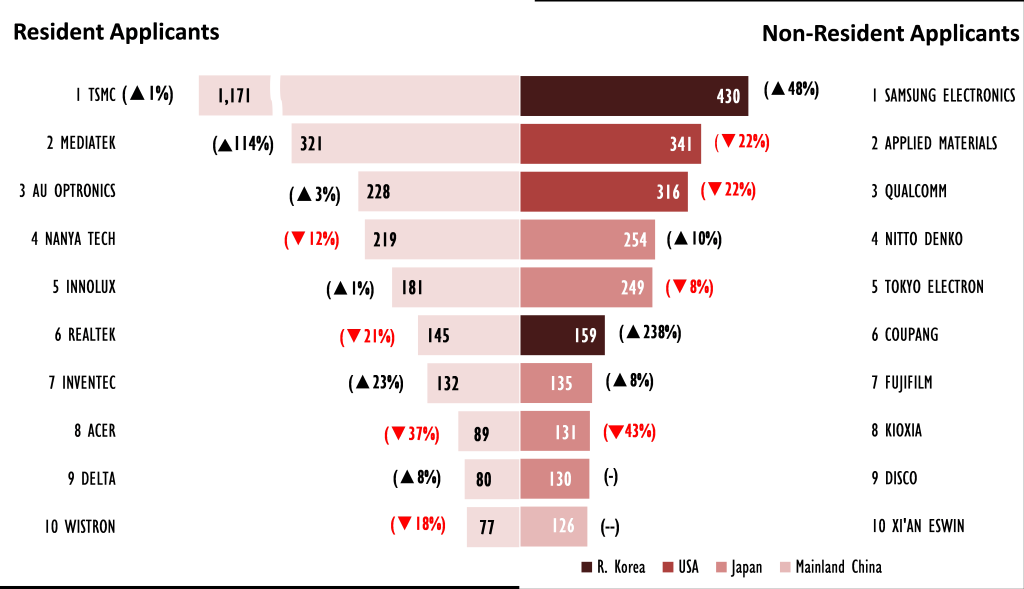 72
72TIPO Releases IPR Statistics for the First Half of 2023
In the first half of 2023, TIPO received a total of 34,611 patent applications (invention, utility model, and design) and 44,653 trademark applications, representing a 0.4% and 4% decrease respectively compared with the same period last year. The number of invention patent applications stood at 24,256 cases. Among resident applicants, TSMC (1,171) outnumbered all the other domestic applicants for the seventh year in a row, and Samsung Electronics (430) leapt to the top of all non-resident applicants for the first time. Uni-President (239) and Saic-Gm-Wuling Automobile (84) topped the list for resident and non-resident trademark applicants respectively. Patent ApplicationsTIPO received a total of 34,611 patent applications. Of these, invention patents (24,256) accounted for a majority of all patent applications, seeing a slight decrease of 0.2%. Both resident (9,390) and non-resident applications (14,866) remained relatively unchanged. Utility model patents declined as well. On the other hand, design patents (3,508) increased by 2% due to a rise in resident applications (9%)(Table 1).Among the top 10 resident applicants for invention patents, TSMC (1,171) has topped the list for seven years straight. Mediatek (321) saw its highest growth rate of 114%, setting a new record in the company’s history by exceeding 300 cases. The number of applications filed by Mediatek, Innolux (181) and Inventec (132) both hit record highs since 2016 (Figure 2).For resident applicants of design patents, Acer (55) surpassed all other applicants once again. L&F Plastics (44) saw its highest growth rate of 76% (Figure 3).The number of invention patent applications from domestic enterprises (7,635) and research institutions (147) grew by 2% and 12%, respectively, while that of domestic colleges and universities (736) decreased. Applications from large enterprises (6,266) as well as from SMEs (1,369) increased by 2% and 3%, respectively.Non-resident applications for invention patents (14,866) were down by 1% (Table 1). Among the top 5 filling countries (regions), Japan led with 6,216 invention patent applications, and applications from both mainland China (1,683) and R. Korea (1,263) grew by about 20% (Figure 1).As for the top 10 non-resident applicants, Samsung Electronics (KR) leapt to the top spot with 430 invention patent applications, setting a new record by exceeding 400 cases. Coupang (KR) (159) saw the highest growth rate of 238% and reached its best ranking since 2016 (6th). Xi'an Eswin (CN) (126) entered the top 10 applicants list for the first time (Figure 2).For non-resident applicants of design patents, Cartier (CH) (72) claimed the top spot for the first time, hitting an all-time record high. Apple (US) (40) accounted for a huge growth of 12.3-fold, due to a lower baseline from the same period last year (Figure 3).Trademark ApplicationsCompared to the same period last year, trademark applications reached 44,653 cases (covering 56,198 classes) and saw a decrease of 4%, a shift from positive growth for 3 consecutive years. The number of applications filed by residents (35,169) and non-residents (9,484) both declined (Table 1).Among top 10 resident applicants, Uni-President claimed the top spot again with 239 applications (Table 3). A breakdown by Nice Classifications (NCL) shows that most applications (7,162) were filed under Class 35, “Advertising, Business Management, Retail and Wholesale Services, etc.” (Figure 4)Among non-resident applicants, mainland China filed the most applications (2,391)(Figure 1). The applications filed by the top 10 non-resident applicants all saw positive growth. Saic-Gm-Wuling Automobile (CN) led with 84 applications (Table 4). A breakdown by Nice Classification (NCL) shows that most applications (1,895) were filed under Class 9, “Computer and Technology Products, etc.” (Figure 5)The top three industries for trademark applications were “Agriculture” (12,198), “Business Services” (9,374) and “Health” (8,936). A majority of resident applications were filed under “Agriculture” (10,246), a rapidly growing portfolio mainly focused on the dining and hospitality industry, whereas non-resident applicants mostly filed under “Research and technology” (3,106) (Figure 6).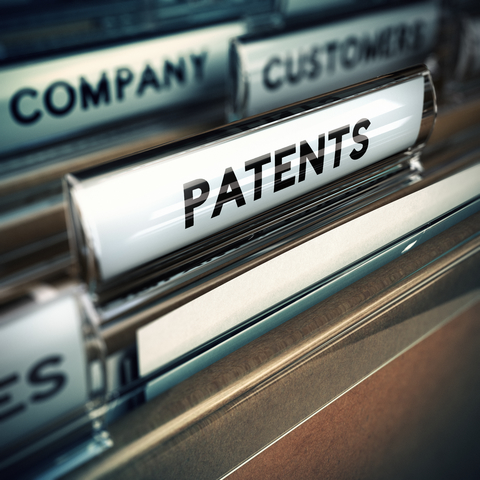 73
73TIPO Publishes English Version of Patent Examination Guidelines, Part II, Chapter 1
TIPO has released the English version of the “Patent Examination Guidelines, Part II: Substantive Examination for Invention Patents, Chapter 1. Written Description, Claim, Abstract and Drawing” to enhance the international IP community’s understanding of Taiwan’s patent examination process. Moreover, it functions as a helpful tool for foreign applicants, enabling them to assess whether their patent applications meet the requirements specified in said Guidelines.To learn more about the “Patent Examination Guidelines, Part II: Substantive Examination for Invention Patents, Chapter 1. Written Description, Claim, Abstract and Drawing,” please click the link provided below: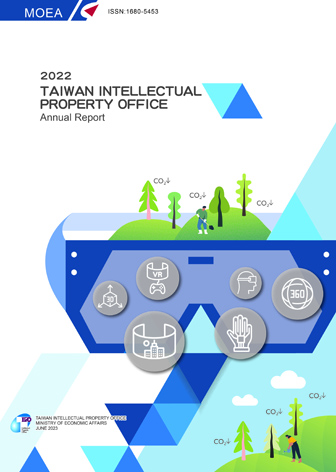 74
74TIPO Annual Report 2022 Showcases Taiwan’s Latest IPR Advancements
TIPO published its Annual Report 2022 in late June 2023, highlighting significant progress in Taiwan’s IPR development over the past year. Despite the challenges posed by local COVID-19 outbreaks, TIPO, alongside our dedicated colleagues, successfully implemented strategic initiatives to overcome the pandemic and meet annual performance goals. The past year saw notable achievements in areas such as patent and trademark examination, IPR legal regime, e-service improvements, promotion of IPR innovation, and international IPR cooperation, contributing greatly to the continuous enhancement of service quality provided by TIPO. For further information, please see:https://www.tipo.gov.tw/en/lp-309-2.html 75
75Amendment to the Regulations Governing the Determination of Patent Term Extention Come into Effect on July 1, 2023
TIPO previously required applicants seeking to extend patent terms on pharmaceutical products or manufacturing methods to submit documentation for the duration of all domestic and/or international clinical trials. Documentation was then sent to the Food and Drug Administration (FDA) of the Ministry of Health and Welfare (MOHW), the central competent authority, to confirm the clinical trial period required for issuing a drug license.On November 2, 2021, the MOHW announced an amendment to the Form for Data Exclusivity and Domestic and International Clinical Trials. The amendment included clinical trial data required for issuing a drug license within the scope of examination. To streamline administrative procedures and improve the efficiency of patent examinations, TIPO announced amendments to the Regulations Governing the Determination of Patent Term Extension on June 28, 2023, which came into effect on July 1 in the same year.According to Article 4 and Article 10 amendments, if the FDA has confirmed the examination data (regarding the period of domestic and/or international clinical trials required for issuing a drug license) submitted by the applicant, then TIPO is no longer required to send the same data in question to the aforementioned authority.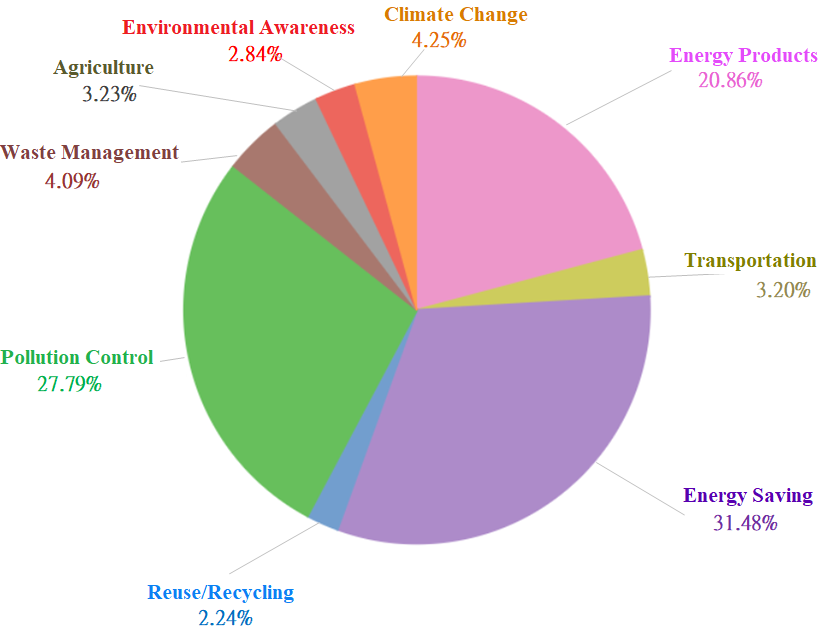 76
76New Green Trademark Analysis Report Reveals Uni-President’s Top-Ranking Performance
To help businesses better understand trends in green trademark registration in Taiwan and promote carbon reduction efforts, TIPO has compiled an analysis report on green trademark industries in Taiwan in the past decade, which examines green trademark application trends across major product classes in Taiwan. Uni-President Enterprises Corp. (“Uni-President”), Apple Inc., and Alibaba Group Holding Limited, a company based in the Cayman Islands, in particular, are some of the top applicants for green trademarks.Trademarks identify the source of goods and services and can serve as indicators of market trends and economic direction. As the world strives to preserve the green planet from rising temperatures, IP trademarks are just as important as technology in the race towards net zero emissions – appealing to many major corporations to take action and reduce carbon emissions.TIPO's report references EUIPO’s research into green trademarks in the EU, filtering trademarks with the Nice Classification listed on applications and further categorizing them into nine major categories of green products: energy products, transportation, energy saving, reuse/recycle, pollution control, waste management, agriculture, environmental awareness, and climate change. This was further subdivided into 35 categories. The report details the proportion of green trademarks in each category, in hopes of helping businesses establish green trademark portfolios, respond to climate change, and formulate net zero carbon emissions strategies.The report also revealed that in the past decade, green trademarks in Taiwan accounted for approximately 15% of the total trademark applications. Overall observations show consistent growth, with the average proportion being around 12.41% from 2013 to 2015, 14.72% from 2016 to 2019, and 15.87% from 2020 to 2022. It is evident that businesses are placing greater emphasis on establishing green trademark portfolios.For green trademark proportions across the nine major categories, the top three (in descending order) were energy saving, pollution control, and energy products – collectively accounting for over 80% of applications. This is clear indication that industry trademark portfolios focus mainly on these three areas.In terms of the nationality of green trademark applicants, Taiwan ranks number one, followed (in order) by Mainland China, Japan, and the US. Mainland China has had impressive performance in transportation, energy saving, pollution control, and waste management. Japan ranks in the top three across all major categories except for energy saving and climate change. The US has had outstanding performance in energy products, energy saving, reuse/recycle, environmental awareness, and climate change.Taking a look at the top three applicants across the nine major categories reveals that Uni-President, Apple Inc., and Alibaba Group Holding Limited from the Cayman Islands are consistent included within the rankings – making them major green trademark applicants in Taiwan. Uni-President and Apple Inc. dominated energy products, energy savings, and waste management, snagging either number one or number two. Uni-President in particular, has made it to the top three in all major categories except transportation and agriculture – a testament to the company’s commendable resolve to grow with Taiwan and strive for net zero emissions.Environmental factors have become increasingly important for businesses and consumers alike. To achieve net zero emissions goals, businesses need to bring new products to market and/or make existing products more sustainable. Green trademarks increase brand visibility and showcases the business’ dedication to sustainable values. TIPO recommends that businesses implement green trademark strategies as soon as possible to take full advantage of the benefits of having green trademarks, as well as market opportunities.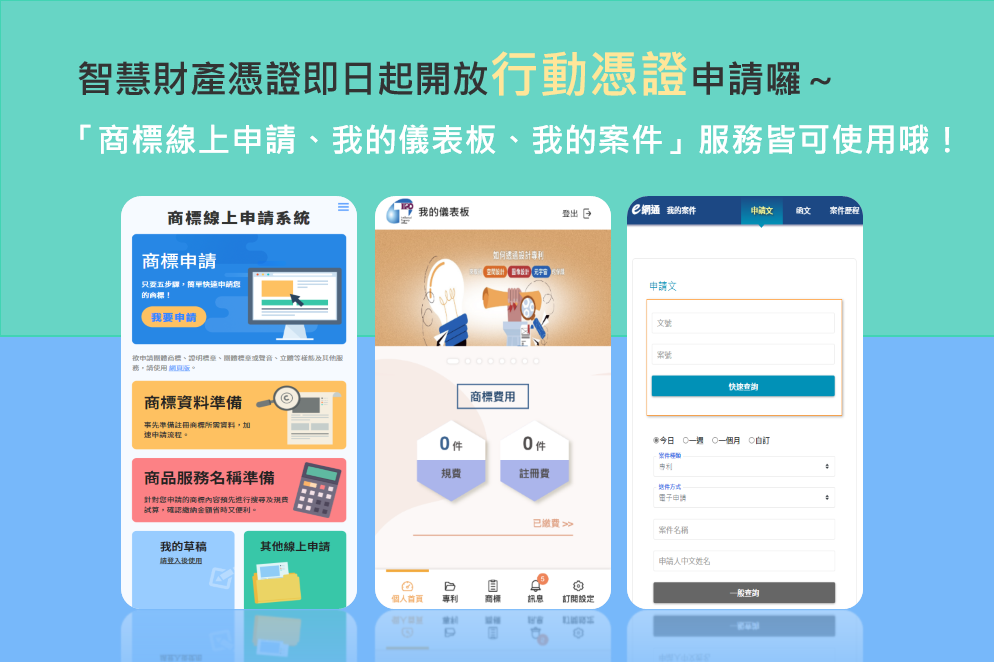 77
77Mobile Applications for TIPO’s TWCA Digital Certificates are Now Available
TIPO commissioned TAIWAN-CA (TWCA) to issue mobile certificates to optimize our digital application services and enhance compatibility with mobile devices. These certificates will support services such as online trademark applications, My Dashboard, My Cases, and other related services that require mobile certificate signing and identity verification.Visit TWCA's certificate application site and fill out the form to apply for mobile digital certificates. You will be required to submit documentation and send the application either directly to TWCA’s Taipei office or to TIPO offices in Hsinchu, Taichung, Tainan, and Kaohsiung. 78
78Taiwan South Korea Design Patent Priority Document Exchange Launch on July 1, 2023
Taiwan and Korea signed an MoU on the Electronic Exchange of Priority Documents (PDX) for Design Patents on November 12, 2021. Following the completion of relevant system development, Taiwan Intellectual Property Office (TIPO) and the Korean Intellectual Property Office (KIPO) launched the PDX program on July 1, 2023.Priority Documents are required in the event that a subsequent patent application is filed with a priority claim. Under the MoU on the Exchange of Industrial Property Information and the Electronic Exchange of Priority Documents signed in 2015, the PDX program has been applicable to invention and utility model patent applications. As the aforementioned program has been put to extensive use by applicants from both countries since its implementation, TIPO and KIPO decided to include design patent priority documents in the program. Upon its implementation, this initiative significantly reduced applicants' time spent on mailing paperwork and streamlined cross-country application procedures, resulting in a more comprehensive and robust priority document exchange mechanism.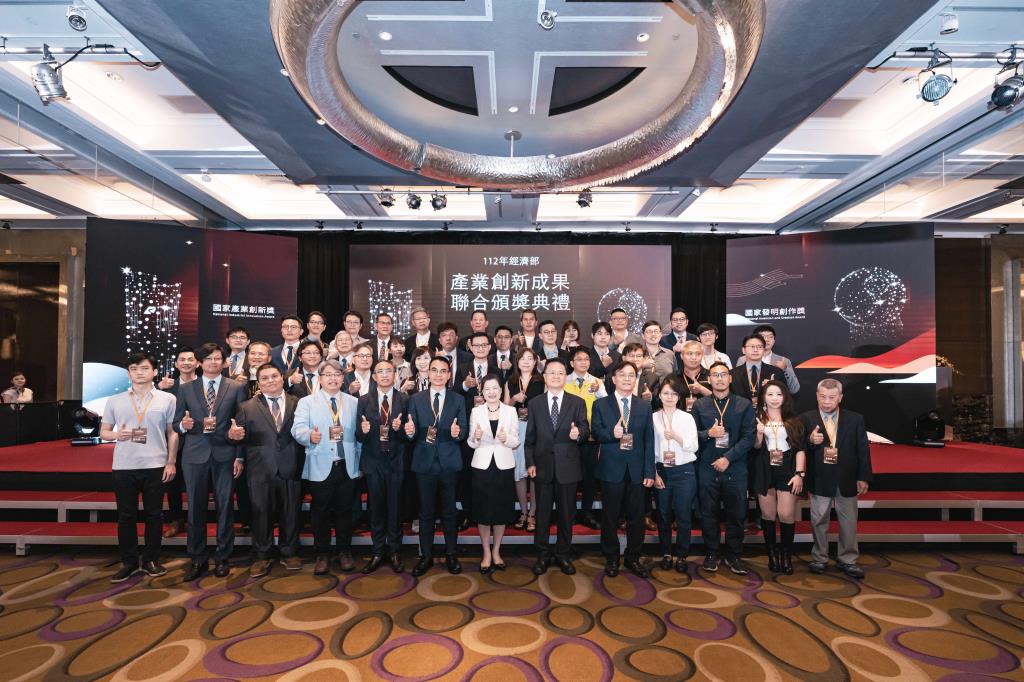 79
79The Highest Honor in the Field of Patents – The Awards Ceremony for the National Invention and Creation Awards
To encourage industry innovation and patent inventions, the MOEA tasked TIPO and the Department of Industrial Technology (DOIT) with organizing the National Invention and Creation Awards and the National Industrial Innovation Awards respectively. The awards give recognition to organizations, teams, and individuals from the industrial, academic, or research spheres that have created added value for technology through incorporating innovation or commercializing invention patents. The hope is that through public recognition, we can encourage domestic businesses, research institutions, and individual inventors to value technological innovation and prompt exchange between the industrial, academic, and research spheres – contributing to the effort of furnishing greater innovation for Taiwan’s industries and technologies.The joint award ceremony for the 2022 National Invention and Creation Awards and the 8th Annual National Industrial Innovation Awards was held on May 15, 2023. Awards were given to 23 organizations, 7 teams, and 16 inventors, as well as 43 patent submissions. The ceremony occurs only once every two years. Vice Premier Cheng Wen-tsan and Economic Minister Wang Mei-hua were in attendance and personally handed out the awards to recipients. A total of almost 300 attendees, including recipients and reporters, came from various industries and bore witness to how innovation prospers within Taiwan industries.Winning entries from the 2022 National Invention and Creation Awards will be featured at the 2023 Taiwan Innotech Expo (TIE) Outstanding Inventions Pavilion between October 12 and 14. All who are interested are welcome to attend the 2023 TIE and view the winning entries for themselves.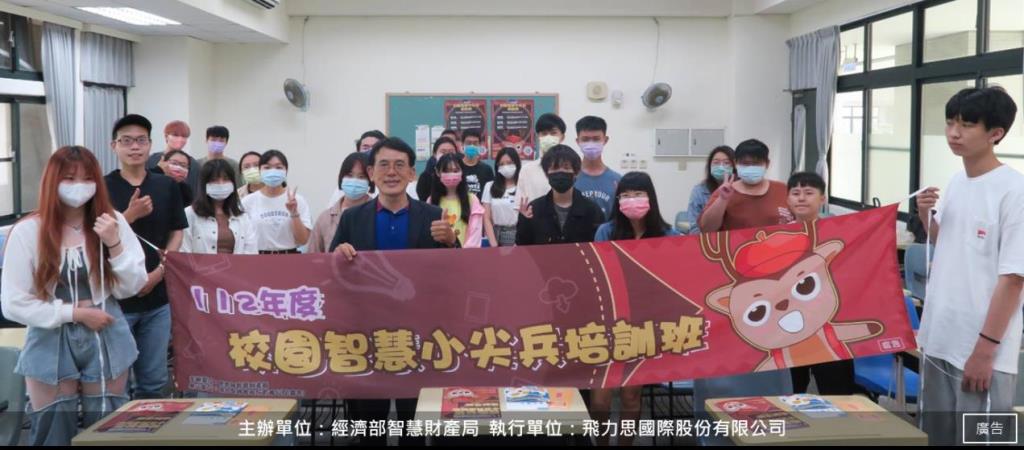 80
80IP Youth Ambassadors Poised for Action - Applications for Advocacy Campaigns Now Open
TIPO is proud to announce the completion of training for 112 IP Youth Ambassadors, who are now prepared to embark on a nationwide mission to promote intellectual property rights. IP advocacy campaign applications are open to elementary, junior high, and senior high/vocational high schools, providing an opportunity to cultivate intellectual property awareness.Recognizing the significance of instilling a profound respect for intellectual property rights from a young age, TIPO organizes annual IP Youth Ambassadors Programs. This program aims to train college students as seed teachers for IPR advocacy. This year, three training sessions were conducted in northern, central, and southern Taiwan. Experts were invited to impart essential knowledge of IPR, delve into emerging copyright issues, and provide guidance on effective advocacy techniques. The program aims to facilitate students' understanding of intellectual property rights and their practical application through relatable real-life examples.TIPO emphasizes that with the rapid development of the Internet and relevant technologies, students have greater access to and utilization of IP. To foster a culture of respect for intellectual property rights among young individuals, TIPO conducts said program for college students, equipping them to serve as advocates for IPR. These trained students are then organized into groups and sent to schools at all levels, including elementary, junior high, and high schools. Through engaging teaching methods such as drama performances and interactive games, the aim is to cultivate the youth's understanding and appreciation of IPR.Schools interested in these IP advocacy campaigns are encouraged to contact the executive unit of the event, FeliZ Communications Group Ltd., at 02-8786-9798, extension 171 (Ms. Lee) or extension 165 (Mr. Chen). Alternatively, they can directly go to the "Copyright x I Support Originals" Facebook fan page for further inquiries.

 Sitemap
Sitemap FAQs
FAQs Feedback
Feedback Bilingual Glossary
Bilingual Glossary